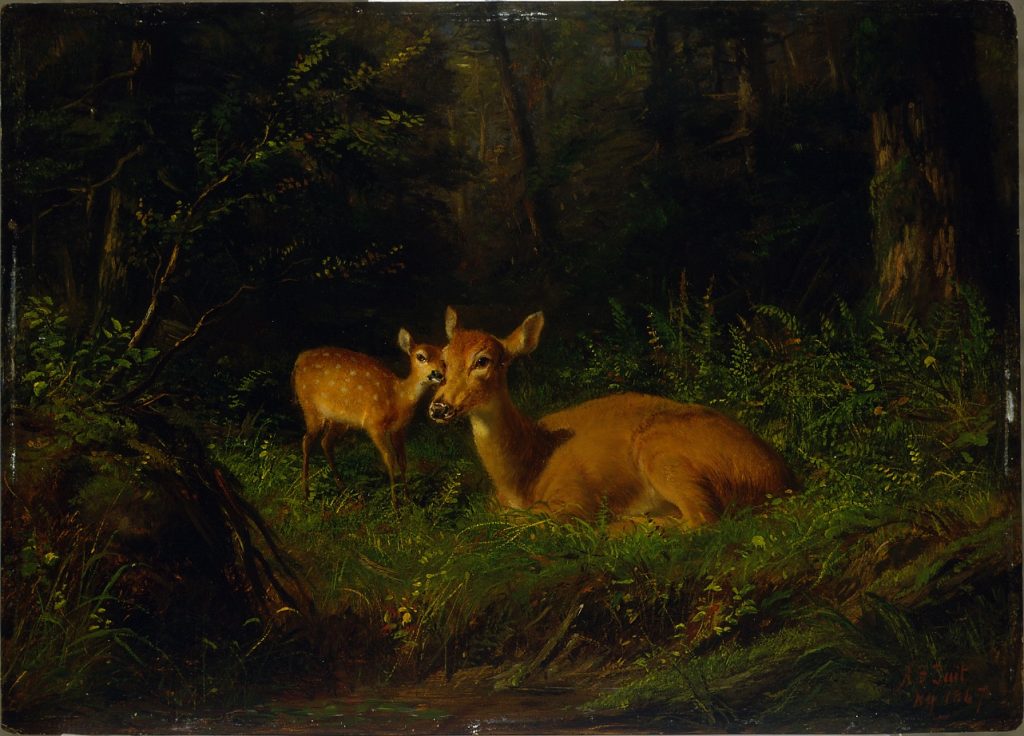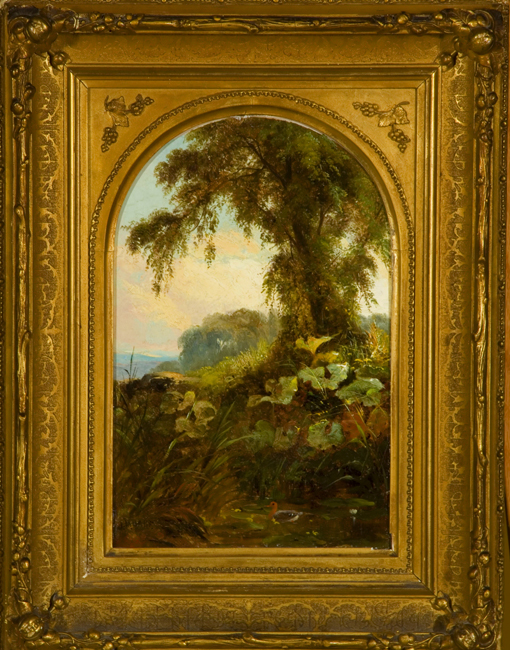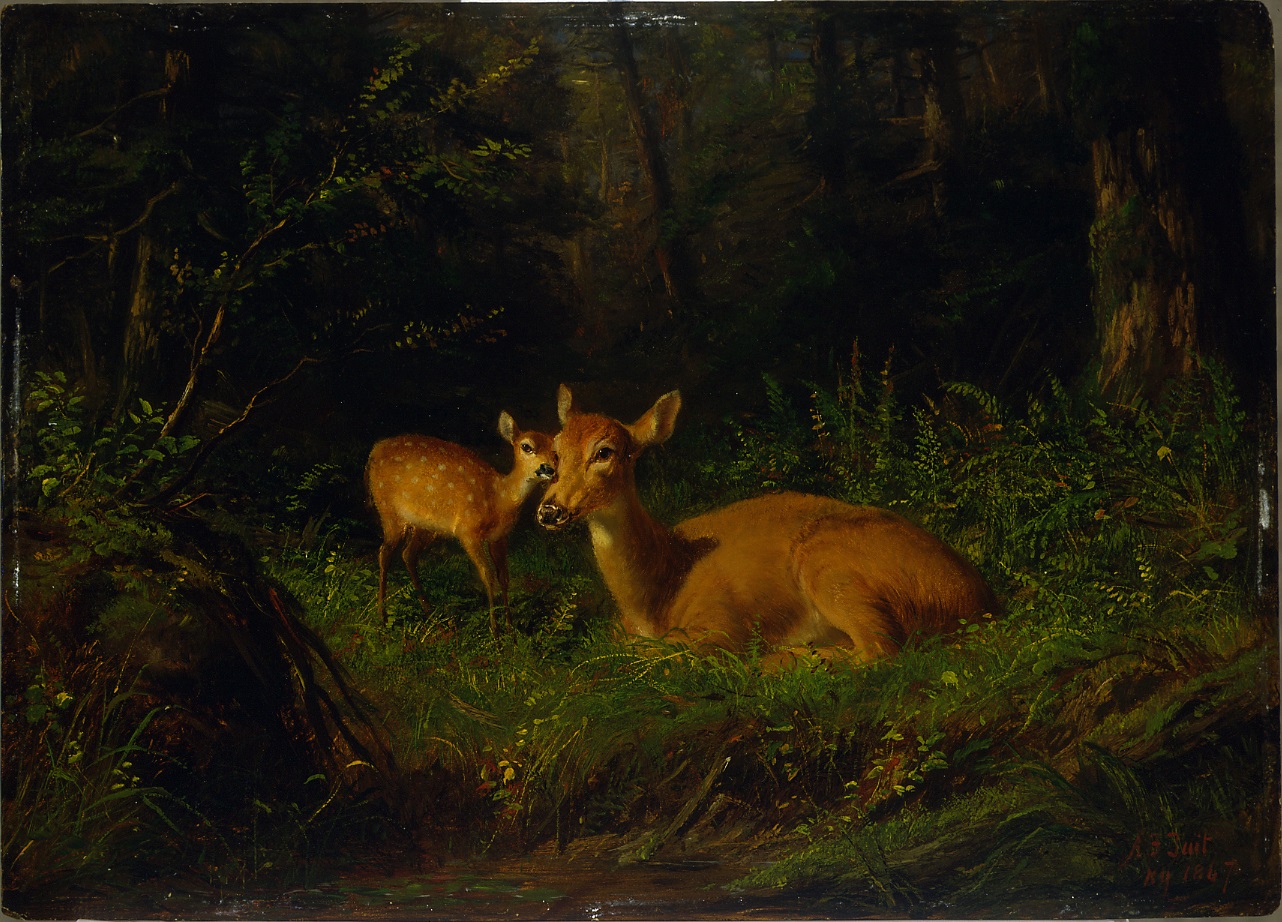
Part 2: A Case of Artistic Friendship: A.F. Tait and J.M. Hart
So often we consider artists and their work in a kind of vacuum, seeing them as exemplars of individual genius rather than members of communities. Sure, we might know that Claude Monet is an Impressionist, or that Gustave Moreau was a student — and later an instructor — at the École de Beaux Arts in Paris, but it can be difficult to remember that artists of the past were people, too. They joined clubs, wrote letters, and even, yes, made friends. Through the course of my research into the collection of American art at CFAM, I ran across one such friendship and the way it impacted the careers of the two artists involved.
Arthur Fitzwilliam Tait was born in Liverpool, England in 1819, one of 10 children of a prosperous merchant who fell on hard times, forcing his children to fend for themselves. He became apprenticed to a local lithographer, attempting to establish himself in that burgeoning field with views of churches, bridges, and other picturesque architectural features. Finding only limited success, however, Tait decided to move to the United States, where he hoped to make a living as an artist while also indulging his passion for outdoorsmanship in the American backcountry1. The slightly younger Hart was also an immigrant, having come to the United States from Scotland with his family when he was a child. Sometime in the 1850s, he returned to Europe to study at the famed Düsseldorfer Kunstakademie — then one of the most well-regarded art schools in the world. Moving to Albany and then New York City by 1856, he brought his knowledge of the Düsseldorf School’s rigorous draftsmanship and romantic subject matter to his friendship with Tait2.

Though no correspondence or other direct records of their friendship survive, both artists spent their summers in New York’s Adirondack Mountains, creating sketches and other preparatory materials for paintings they would execute over the winter months in their NYC studios. They frequently worked on each other’s paintings, as well. Tait was the superior animal painter, while Hart excelled at landscapes, and so the two artists often combined forces. The paintings by the two artists in the collection here at CFAM were, as far as we know, executed entirely by each alone, but an examination of the two reveals the ways in which this partnership would have been advantageous. Doe and Fawn, executed in 1867 by Tait, shows his mastery of animal painting, a mastery which led him to occasionally being called the “American Landseer,” after the famed English painter of dogs, hunting scenes, and bold mountain rescues3. His understanding of anatomy, texture, and color are harnessed in the service of this sweetly sentimental scene, which depicts the animals realistically in form, if not necessarily in behavior. The deer are undoubtedly the center of the piece, with the trees, flowers, and other flora existing mainly as a backdrop for this central pair. Hart’s Summer Landscape of a decade earlier, though a sketch instead of a finished painting, shows a much stronger understanding of landscape conventions, with careful delineations of the sky, distant mountains, and more detailed middle-ground tree and foreground plant life. If Tait has produced a landscape as a backdrop, Hart wishes to show it for its own sake, a fact further confirmed by the sketchy, even cursory duck in the lower center of the picture.
This tendency to combine forces actually got Tait into a bit of hot water in 1857, however, when the New York Herald accused him of passing off Hart’s work as his own. This accusation, which came just before Tait was to be elected to the National Academy of Design, was a serious one then, just as it would be today. Tait and his allies swung into action, firing off letters to the Herald protesting the accusation and asserting his innocence. John Osborn, a friend and patron, offered to donate a thousand dollars (a sizable sum, considering that Tait often sold his paintings for around $50) to charity if anyone could prove the Herald’s charge. Osborn kept his money and the controversy died down, though Tait would occasionally spar with artists and critics in the newspapers throughout the 1850s and 1860s4. Eventually the two artists would go their separate ways, with Tait increasingly focused on his animals and Hart doing a lively business in Hudson River School-style landscapes. Both remained active New York artists, but there is no indication of whether or not they remained friends5. They surely continued to cross paths as they lived out their long and productive careers.
This post is part of a series by American Art Research Fellow Grant Hamming sharing the results of his ongoing research, made possible by a grant from the Henry Luce Foundation. For other entries in the series, please visit our blog. Grant Hamming is the American Art Research Fellow at CFAM. He holds a doctorate in the history of art from Stanford University. His research interests include American painting, printmaking, and transnational currents in the history of art.
2Baumgärtel and Museum Kunstpalast (Düsseldorf, The Düsseldorf School of Painting and Its International Influence 1819-1918 [Exhibition Stiftung Museum Kunstpalast, Düsseldorf, September 24, 2011-January 22, 2012, 225–26.
3 Cadbury, Tait, and Marsh, Arthur Fitzwilliam Tait, 18.
4 Cadbury, Tait, and Marsh, 53–55.
5 Baumgärtel and Museum Kunstpalast (Düsseldorf, The Düsseldorf School of Painting and Its International Influence 1819-1918 [Exhibition Stiftung Museum Kunstpalast, Düsseldorf, September 24, 2011-January 22, 2012, 225–26.

